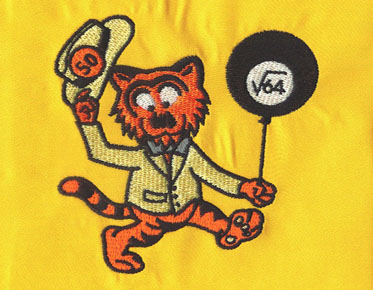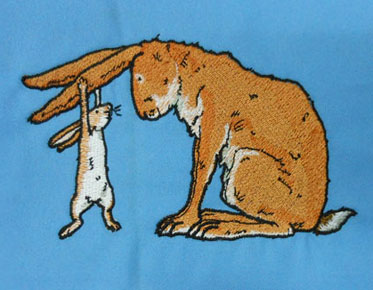Considerations for Digitizing Designs on Sleeves and Collars
Embroidery digitizing plays a crucial role in
bringing designs to life on various garments. When it comes to specific garment
placements like sleeves or collars, special considerations and guidelines are
necessary to ensure optimal results. In this article, we will explore the key
factors to consider when digitizing designs for sleeves and collars, ensuring seamless integration and a
professional finish.
I. Understanding Sleeve and Collar Embroidery:
1. Placement Considerations:
Embroidering on sleeves and collars requires a
different approach due to the unique shape and size of these areas. It's
important to consider the curvature, length, and available space for the design
to ensure proper alignment and proportion.
2. Design Adaptation:
Designs intended for sleeves and collars may need to be adapted or modified to fit the specific dimensions and contours of these areas. This may involve resizing, repositioning, or adjusting design elements to achieve a visually balanced and aesthetically pleasing result.
II. Size and Proportion:
1. Scaling and Resizing:
Proper scaling and resizing of the embroidery design are crucial for
achieving an optimal appearance on sleeves and collars. The size should be
proportionate to the garment area, avoiding designs that are too large or too
small, which can result in distortion or loss of detail.
2. Balance and Symmetry:
Maintaining balance and symmetry in the design
is essential, especially on collars where the embroidery is often centered.
Digitizers ensure that the design is aligned correctly, taking into account
collar width, button plackets, and other structural elements.
III. Stitch Density and Fabric Compatibility:
1. Stitch Density:
Adjusting stitch density is vital to ensure
optimal embroidery results on sleeves and collars. The embroidery digitizing process takes into account the fabric type
and weight, as well as the desired level of detail, to determine the
appropriate stitch density that will ensure clear and defined embroidery.
2. Fabric Compatibility:
Different fabrics used for sleeves and collars may require specific considerations. Digitizers select suitable stitch types and underlays to accommodate fabric characteristics such as stretch, thickness, and texture. This ensures that the embroidery sits well on the fabric surface and maintains its integrity over time.
IV. Collaboration and Approval:
1. Client Consultation:
Effective communication between the client and
the digitizing team is essential. Clients provide clear instructions and
expectations for sleeve and collar embroidery placements. Collaboration ensures
that the digitizing process aligns with the client's vision and desired
outcome.
2. Sampling and Approval:
Samples of the digitized design are created for the client's review and approval.
This allows for any necessary adjustments to be made before final production.
Clients can provide feedback on design placement, size, or any other
considerations specific to sleeves and collars.
FAQs:
1. Can embroidery digitizing services
accommodate unique sleeve or collar shapes?
Yes, embroidery digitizing services can adapt designs to fit unique sleeve or collar shapes. Skilled digitizers ensure that the design is proportionate and properly aligned, taking into account any curvature or structural elements present.
2. Are there any limitations to the size or
complexity of designs on sleeves and collars?
While there may be some limitations based on
the available space, skilled digitizers can work within those constraints to
create visually appealing designs. They can adjust the size, modify elements,
and optimize stitch density to achieve the desired result.
3. How can I ensure that the embroidery on
sleeves and collars is durable?
Embroidery digitizing services consider fabric
compatibility and select appropriate stitch types and underlays to enhance
durability. The digitizing process, combined with proper thread and backing
selection, ensures long-lasting embroidery on sleeves and collars.
In conclusion, when it comes to digitizing
designs for sleeves and collars, careful attention to detail and understanding
of garment placement is essential. By considering factors such as placement,
size and proportion, stitch density, fabric compatibility, and collaborating
closely with clients, professional digitizing services can ensure that the final embroidered designs meet and
exceed expectations.
Embroidery on sleeves and collars adds a touch
of sophistication and uniqueness to garments. With skilled digitizers and
advanced technology, the digitizing process can adapt designs to fit these
specific areas, resulting in professional and visually appealing embroidery.



